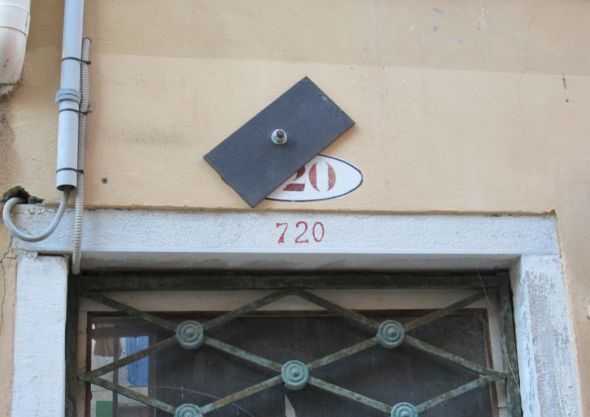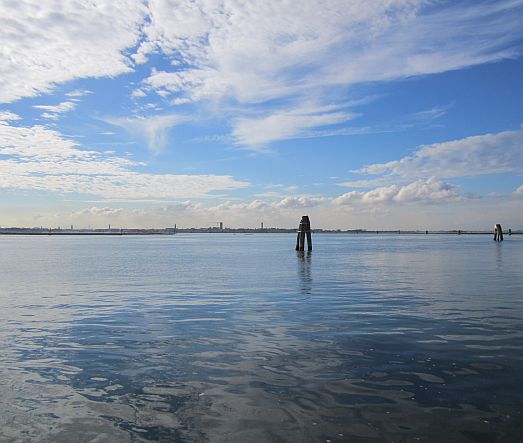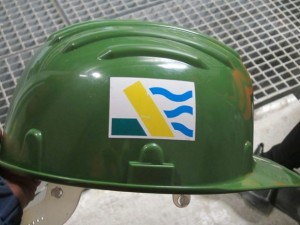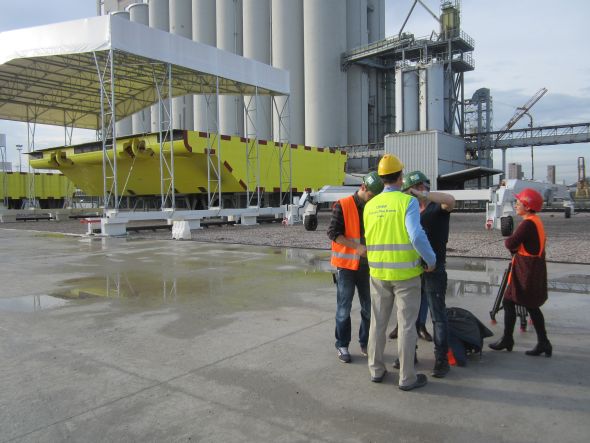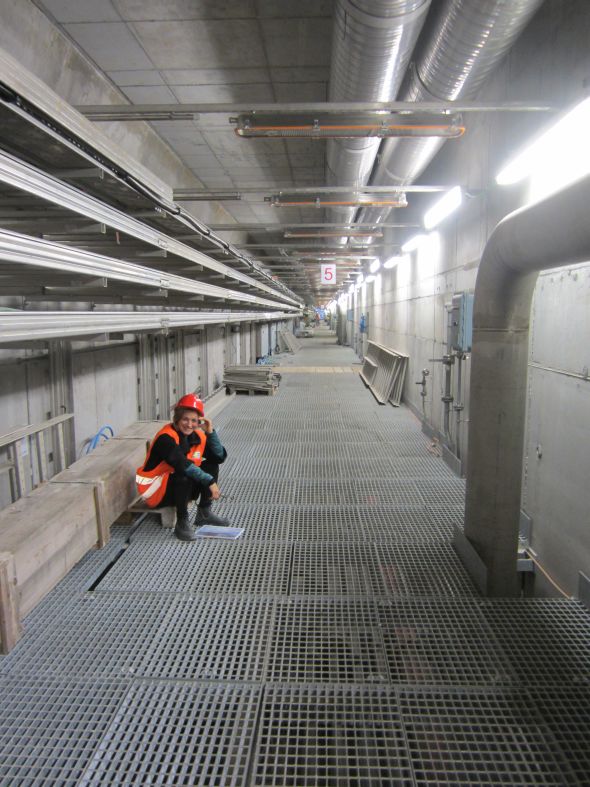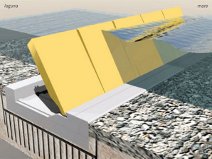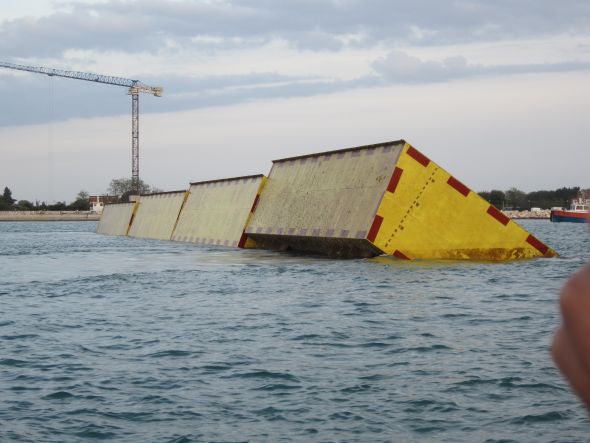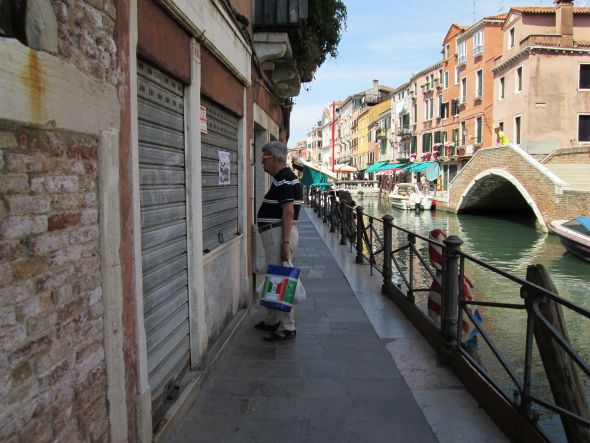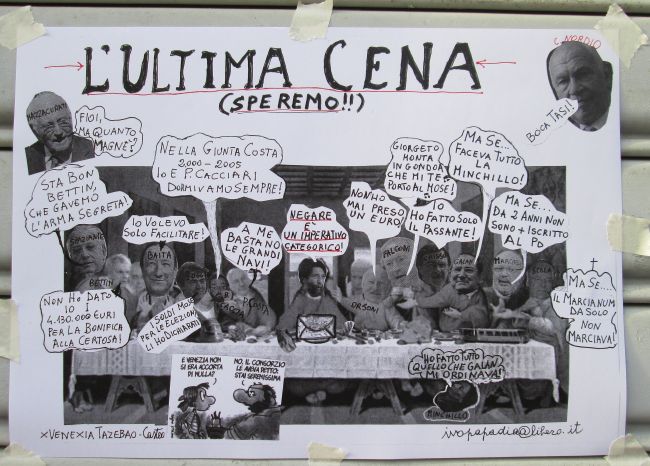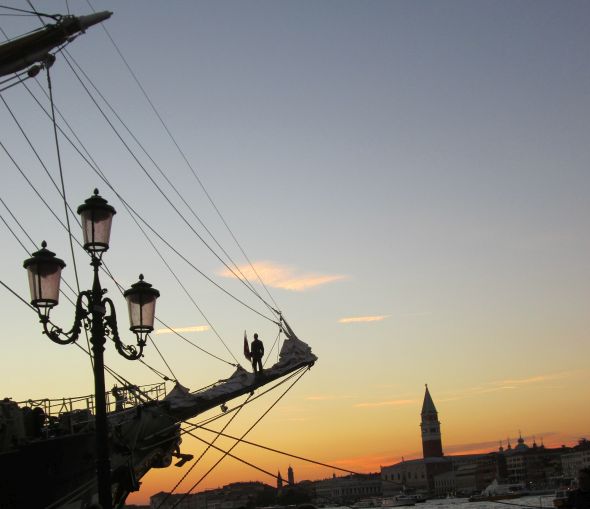
As has become hugely evident, I am temporarily (I trust) slowing down on not making things up.
I discover that it isn’t easy to find new topics that interest me (“new” and “interest” don’t always coincide). Two decades into my life here, a certain amount of repetition in daily or annual events can make it difficult to whip up enthusiasm to address them again.
Also, as I may have hinted not long ago, I am somewhat worn down by the relentless stream of bad, crazy, incomprehensible, infuriating news that steamrolls over the city every day, and if it depresses me to read these stories, it would depress me even more to write about them. I used to find it sort of entertaining, and imagined that examining the entrails of Venetian life could be interesting to people who don’t live here but who care about the city. Examining entrails used to be one way of predicting the future, and the technique still works extremely well — but the future I glimpse is even less appealing than the entrails themselves. (Full disclosure: I happen to like tripe, which is prepared in various ways here. But I’m not sure if tripe qualifies as entrails.) End of metaphor.
There are the infinite variations on the theme of corruption. If I wanted to focus on that, I’d have to change the name of my blog — there’s just too much material. It appears that just about the only person who hasn’t been stealing money from the city, the region, the nation, her employer (which I don’t have, but that’s a detail), or her clients and customers or suppliers, is me. When a general of the Guardia di Finanza AND a platoon of his troops are found with their hands plunged deeply, up to the shoulder, into the municipal pot, it does make you wonder what this world is coming to.
But what now fascinates me is the ever-increasing number of projects that are living demonstrations of a phenomenon we all know too well and for which the Germans have even invented a word: Verschlimmbesserung, a supposed improvement that makes things worse.

These are projects devised by professionals, remember, but perhaps being a professional is becoming a handicap, because so many seem to lose their way in their professional brain-thickets and forget the simplest, common-sense details that are obvious to any user — amateurs! — of their projects.
The two most recent examples, and then I’m finished for today:
The tram. I’ve already mentioned the hideous installation at its terminus at Piazzale Roma. But you don’t have to look at it, so let’s consider that issue settled. What I’m talking about are the almost daily discoveries of inexplicably stupid mistakes. I define a mistake as “inexplicable” if it was performed by a professional.
From the day of fanfare in which the tram made its maiden voyage from the mainland to Venice, there have been technical problems (losing electrical power, often, for assorted reasons; a nexus where the tracks just didn’t switch the way they were supposed to, etc.). But these, theoretically, can be fixed.
But the other day a car broke down on the bridge from the mainland to Venice, thereby blocking all traffic behind it (normal! there’s no breakdown lane!) including the tram (wait — what?). Yes, the tram’s track was installed in the same lane as the wheeled traffic. A normal old bus can just groan, downshift, and inch around a stalled car or truck. The tram can only sit there until it’s all cleared up. The bridge is 4 km/2.5 miles long, and all the passengers had to pile out and walk the rest of the way to Venice, thereby easily making their healthy daily quota of 10,000 steps. And making hash of their morning schedule, doctor appointments, business meetings, Scout jamborees, whatever was on.
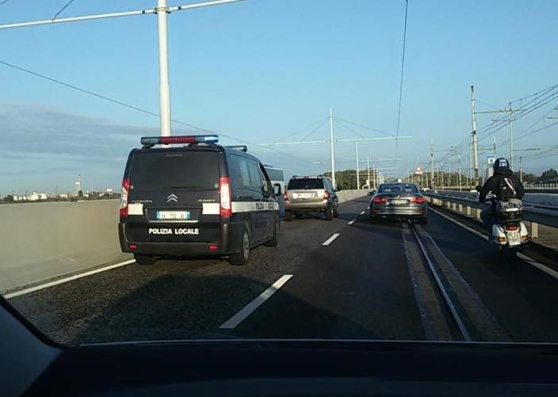
Never fear — an excellent experiment will begin in November. For three months (note: containing all the high-traffic holidays), the tram lane will be reserved only for public-service vehicles, which I suppose are considered less prone to breaking down. Did I mention there is no breakdown lane? The bridge has only two lanes in each direction, therefore creating a temporary one by moving into space on the opposite side will crush all the private vehicles into one lane.
If that doesn’t sound especially shudderworthy, consider that about 1,700 vehicles per hour cross the bridge. In 2014 there were 162 cases of stalled vehicles — one every other day, essentially.
So bring on the tram! And bring your hiking boots and Nordic-walking sticks! And just think: You still have to pay for a ticket. The Casino says people aren’t gambling so much anymore, but they’re obviously not thinking of the thousands of people who play Tram Roulette on the bridge every day.
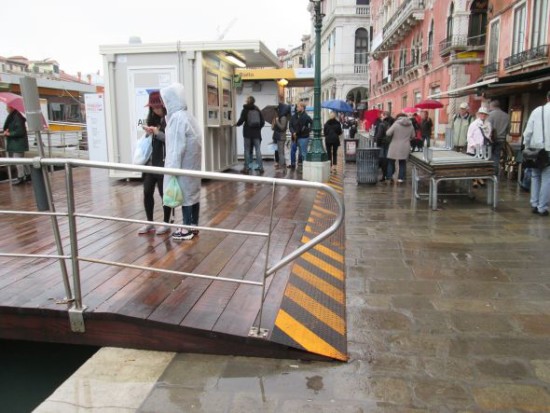
Let’s move on to the Rialto area.
The subject is the platforms to which the vaporetto docks are attached. The past few months have seen a mammoth undertaking to build new ones, bigger ones, more efficient ones.
But now that high water has come calling, it has been discovered that these improvements have un-improved the necessary space to set up the temporary walkways. I have disembarked at Rialto when there was very high water, and without the walkways I’d have had water up to and even past my knees. Walkways at Rialto are not some crazy new idea.
And yet the new platforms haven’t taken the walkways into account, and it was suddenly discovered (cue sound of sloshing water) that the spaces involved don’t work anymore. The temporary walkways can’t reach all the way to the fixed platform, so there will be a gap between the platform and the walkway which will be full of water.
Unhappily, the large brains designing the new docks didn’t think to contact anybody, least of all the steadfast but shot-riddled Paolo Canestrelli, director of the Tide Center, to discuss anything so trivial as height of water, need to calculate for.
To raise the fixed platforms at this point will require another huge undertaking. Just think, everyone had so enjoyed the big inauguration ceremony.
Much of the most beautiful city in the world is beginning to resemble those municipal offices where the employees have to adapt by attaching things with rubber bands, hand-writing signs and labels with Sharpie pens, sticky-notes everywhere. Just make it work somehow.
But now I’m going to make you laugh. It’s only fair. I mean, I laughed, even though on paper (this is paper) it isn’t so funny.
Giancarlo Galan, the former president of the Veneto Region, has been sucked deeply into the MOSE corruption scandal, the details of which will be oozing out even after the trumpet call to the Last Judgment. Among other things, he was convicted of having taken 15,000,000 euros in bribes.
He has done some token jail time (he was sentenced to two years and ten months, of which he spent only 78 days in prison and much of the rest at home in his luxurious villa on the mainland). And the state confiscated this villa, worth some 2 1/2 million euros, to pay off part of his debt. The rules said he had to vacate the premises and leave it in habitable condition.
He did vacate the premises, but the next people to go in discovered that there were no more bathrooms. Workmen, presumably not on their own initiative, had torn out all the radiators, toilets, bidets, and sinks in the place.
So now he has added to his list of misdeeds the formal accusation of having damaged state property. And of not having honored the agreement to leave the villa in useable condition.
His lawyer immediately said that this had been an “error,” and of course everything is going to be put back, right away. How anyone could make such an error baffles and perplexes me.
You see? I don’t have to make anything up. It’s all right there in front of me.
